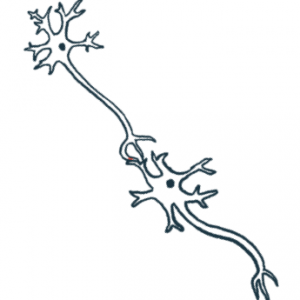Gray Matter Loss in Spine Crucial, But Difficult, Marker of MS Disability

Loss of gray matter in the spinal cord clearly associates with greater disability in people with multiple sclerosis (MS), but determining the extent of its loss is limited by an inability to accurately measure gray matter in all patients, a small study in Spain reported.
The true amount of spinal gray matter — mainly containing nerve cell bodies — and spinal white matter — which consists largely of nerve fibers and their myelin sheaths — is obscured by the presence of lesions, especially in people with progressive MS forms, its researchers said.
“Clinical associations with disability have been observed and seem stronger for spinal cord than for brain atrophy measures,” the team wrote, “but cervical cord lesions could greatly hamper its [clinical] application” as a disease biomarker.
The study, “Spinal cord grey matter atrophy in Multiple Sclerosis clinical practice,” was published in Neuroscience Informatics.
Brain atrophy, particularly the loss of gray matter as measured on MRI scans, is an established way of monitoring MS progression. Gray matter loss in the brain is associated with disease disability, including cognitive and motor declines.
More recent evidence suggests that much like in brain tissue, loss of gray matter in the cervical spinal cord is also linked to worsening disability in MS. The cervical spine is the cord’s uppermost region, located in the neck.
“Seminal studies … have been able to show that patients with MS display significant cervical grey matter atrophy as compared to healthy individuals, and that cervical cord grey matter damage is clinically relevant towards disability over and above brain grey matter atrophy,” the scientists noted.
Researchers in Barcelona now evaluated gray matter in the brain and spinal cord of 48 MS patients (31 women) and 11 healthy adults (6 women) using MRI imaging. Patients mean age was 43.1, with 23 having relapsing forms of MS and 25 progressive forms. The mean age for the healthy participants, serving as controls, was 40.2.
The study’s goal was to evaluate the feasibility and clinical relevance of MRI-based estimates of spinal cord gray matter loss in a clinical setting.
Greater total brain and spinal cord volumes were evident in healthy adults compared with MS patients, indicating tissue atrophy in patients, the scientists reported. Brain levels of gray matter and white matter, in particular, were both lower in patients relative to controls.
To analyze gray and white matter in the spinal cord, a segmentation analysis was performed at the second and third cervical vertebrae to outline and separate the two in MRI images.
While this analysis was possible for all healthy adults, it could only be performed in 18 of the 48 MS patients. According to the team, this was due to the presence of cervical cord lesions “blurring the distinction” between gray and white matter.
Patients’ spinal cords also showed significant asymmetry in gray matter compared with healthy controls, meaning that the area covered by gray matter in sections without lesions could not be generalized to estimate the area covered in lesioned areas.
Of the 29 patients for whom segmentation could not be performed, six had relapsing MS — amounting to 26% of segmentation failures in this group — and 23 had progressive MS, for 92% of segmentation failures among these patients.
Among the 18 patients analyzed, brain and spinal cord atrophy associated with the degree of MS disability as measured by the Expanded Disability Status Scale (EDSS). Specifically, higher EDSS scores, indicating a greater disability, were associated with a lower total tissue volume and reduced gray matter in both the brain and spinal cord. No significant association was observed with white matter.
Overall, study results suggest that “spinal cord atrophy measures are highly relevant towards disability, even over and above brain measures,” the researchers wrote.
However, the presence of cervical lesions in MS patients, particularly for those with progressive MS, “severely affected our ability to obtain reliable spinal cord grey matter segmentations,” they added. “Such limitation should be overcome before this promising biomarker can be considered for full clinical application.”







